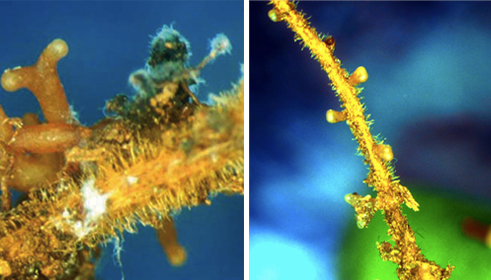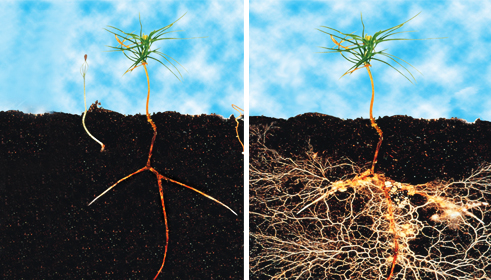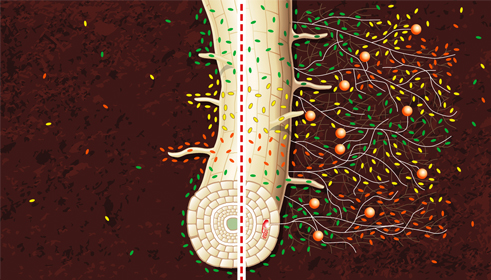Biofertilization
Understanding the Science
Biofertilizing Programs
Understanding the Science Behind Biofertilizing Programs
Many urban and residential soils are in need of improvement. They are either highly compacted, low in organic matter and generally very low in microbial life. I work to rebuild these “tired” depleted soils and establish viable microbial populations that will create and sustain a “naturally renewable” source of soil fertility.
Nurturing and developing this process for trees and shrubs requires a different approach that most property owners are not familiar with. The traditional approach to using fertilizers (usually high in nitrogen) produces excessive canopy growth, which can be a problem when trees lack the required developed root systems to support this new growth.
This practice can leave trees in a weakened state that renders them less capable of withstanding attacks from insects and diseases. Building and developing better and stronger root systems is my primary method for achieving sustained plant health. Healthy root systems allow trees and shrubs to withstand summer heat, drought, water restrictions and many other environmental stresses.
Natural environments (the forest) support multitudes of microbial life in many different relationships with the plants that grow there. Life in a forest is self- sustaining and does not require fertilization. In a natural forest setting, leaves, needles and foliage fall and gradually decompose creating a natural fertility process and nutrient source for trees.
In an urban or residential environment, the leaf litter that would eventually decompose and provide natural fertilizers for our trees is cleared away. Grass is planted under trees which supports a large bacterial component in direct conflict with trees normal association with fungi. This grass also competes with the trees for valuable water and mineral nutrients and is often mowed with heavy equipment that compacts the soil.
When homes are built, topsoil is removed and valuable microbes that change minerals in the soil into nutrient sources the plant can use are removed.
Below are samples of mycorrhizal fungi and beneficial bacteria in association with healthy tree roots.

Mycorrhizal fungi/beneficial bacteria – Photos Courtesy of Shigo and Trees Associates.
I correct these deficiencies by the use of high quality, environmentally sound products that introduce essential microbes along with the best ingredients available to support these populations and rejuvenate your landscape. Over time the products I use recharge and build stronger tree and plant root systems. By introducing this “life component” into the soil ecosystem it begins a process which eventually becomes self sustaining. Typical fertilizer amendments simply add elements that may leach quickly through the soil.
Mycorrhizal fungi/beneficial bacteria – Photos Courtesy of Shigo and Trees Associates.
Mycorrhizal fungi are beneficial fungi that act as a secondary root system for trees, plants and shrubs. This secondary root system provides up to a 700% increase in the plant’s ability to absorb important nutrients and water.
See the dramatic difference in the two photos below of Scots pine before adding mycorrhizal component and after.
Scots Pine before adding mycorrhizal component and after.

Mycorrhizal fungi and rhizosphere bacteria improve soil fertility and plant growth. Below is an example Without rhizosphere bacteria.

Rhizosphere-bacteria photo courtesy of Plant Health Care, Inc.
In nature, certain species of beneficial bacteria promote healthy plant growth and soil fertility. These “good” bacteria are called rhizobacteria and displace harmful soil life that may be present. While common in natural settings, their populations are often very low in urban and residential landscapes, nursery potting soils and other man-made landscapes.
Adding natural based products containing both mycorrhizal fungi and beneficial bacteria as part of a regular plant health maintenance program, this will improve your soil fertility and improve your plant’s health.

